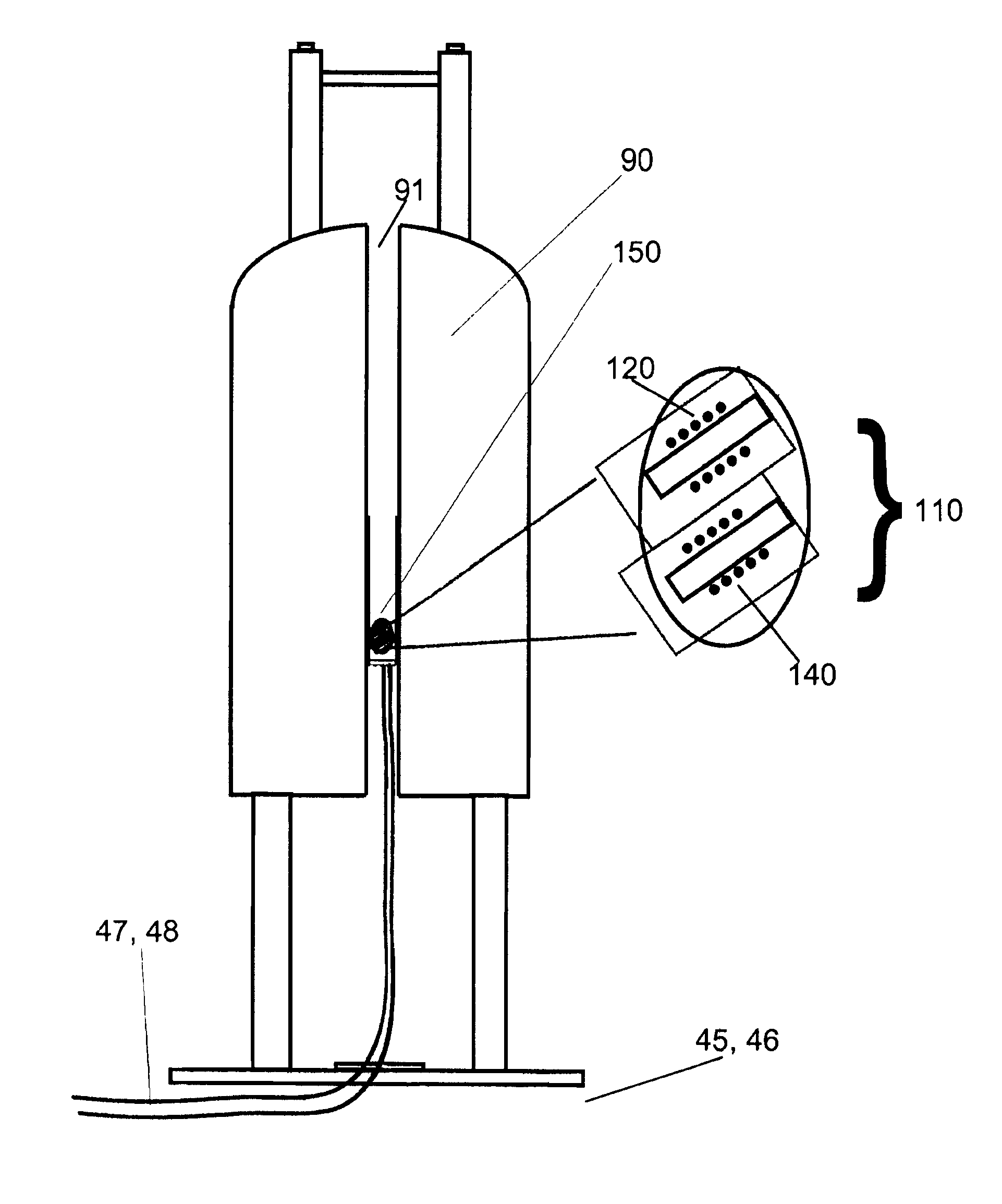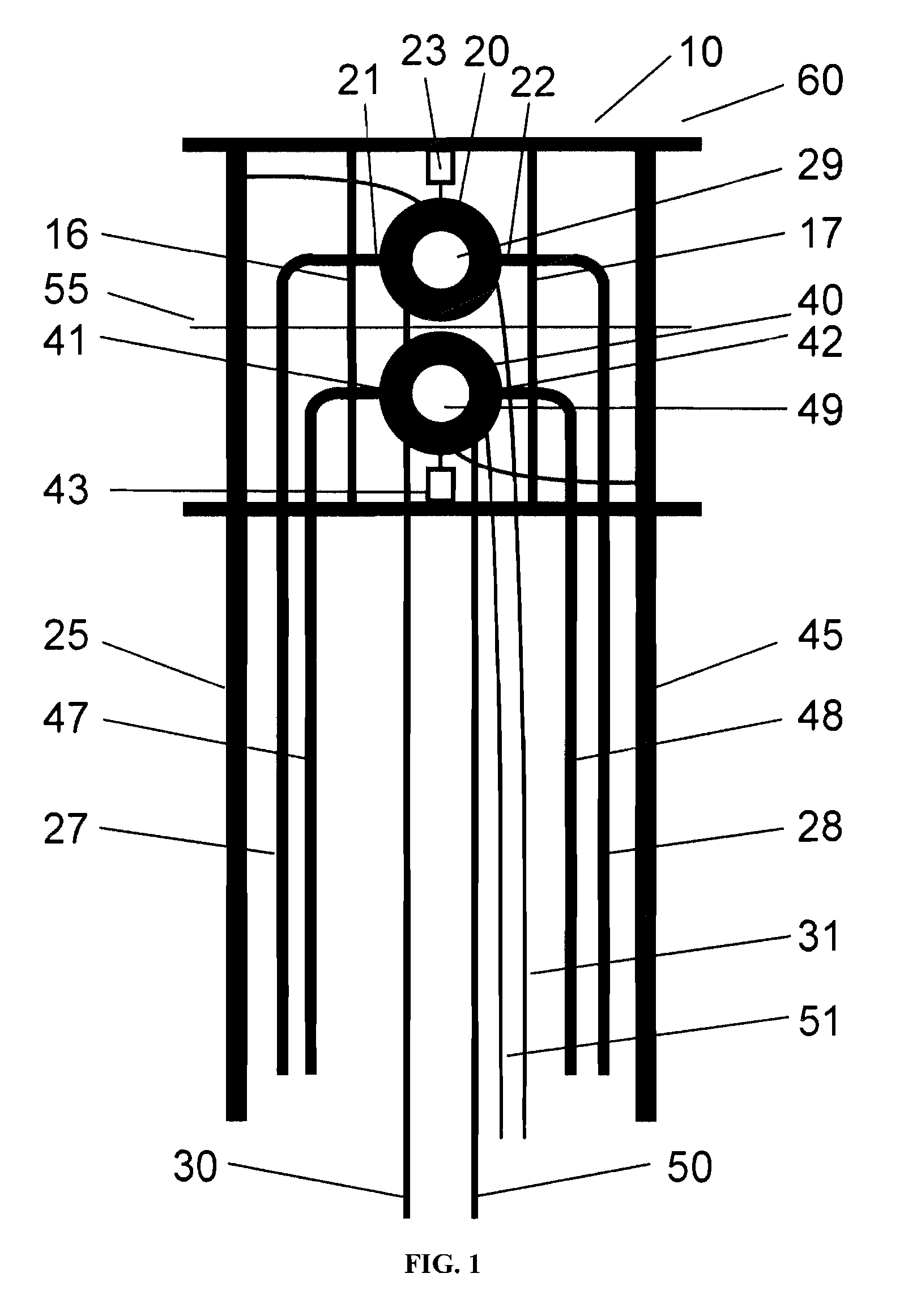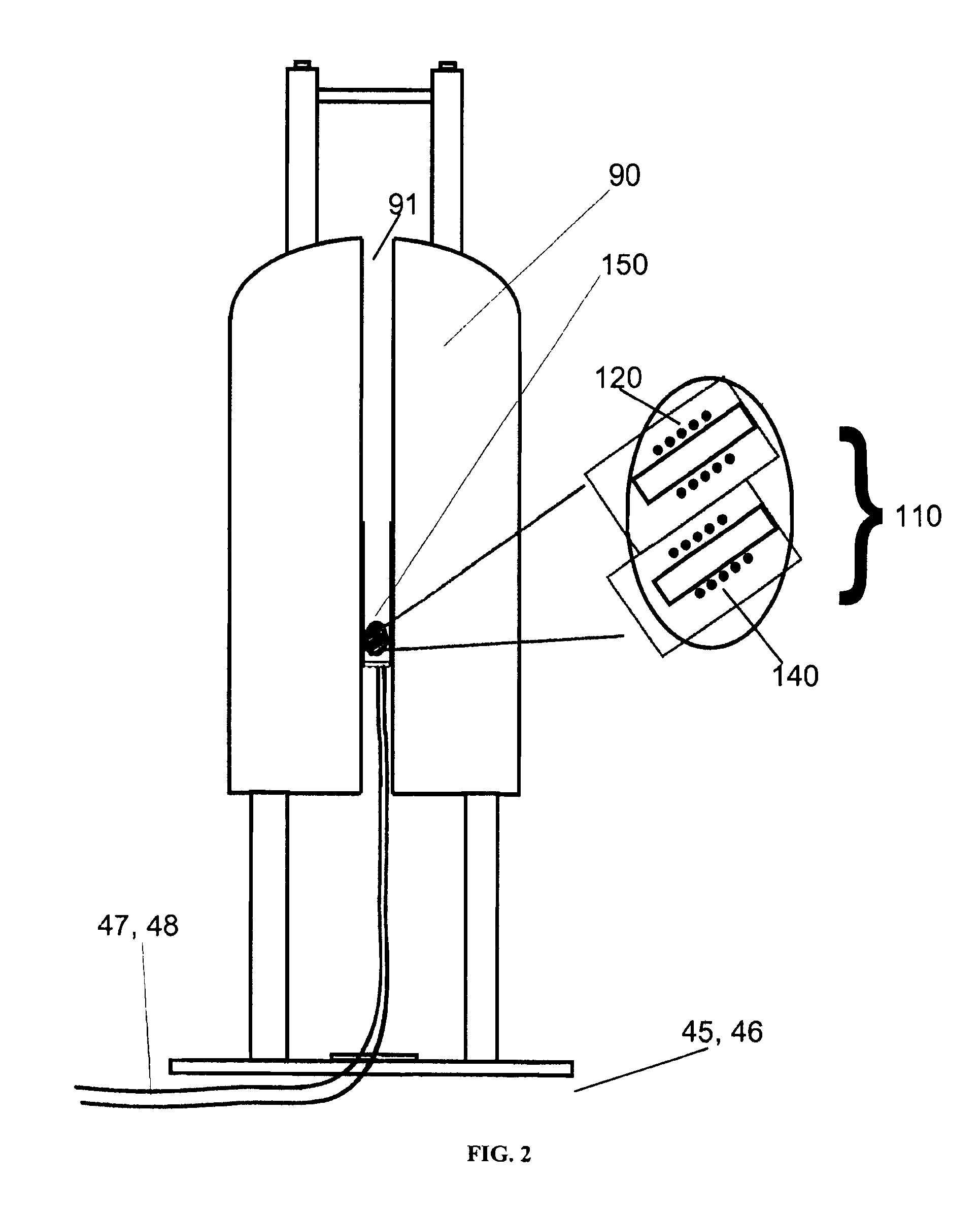High-throughput systems for magic-angle spinning nuclear magnetic resonance
a nuclear magnetic resonance and high-throughput technology, applied in the field of magic-angle spinning nuclear magnetic resonance (“ mas”) probes, can solve the problems of long relaxation time, poor crystallization or even amorphous, and the preparation and acquisition time of fourier transform solid-state nmr experiments is typically tens of milliseconds, so as to reduce cross talk
- Summary
- Abstract
- Description
- Claims
- Application Information
AI Technical Summary
Benefits of technology
Problems solved by technology
Method used
Image
Examples
example 1
[0056]In this example, the NMR line with was investigated as a function of distance from the homogeneous region of the magnet. The data was acquired on a CMX-II NMR spectrometer using a probe equipped with a 7.0 mm MAS (Revolution NMR). The magnetic field strength was 7.05 Tesla. As shown in FIG. 3, the magnetic field homogeneity for adamantane remained relatively unchanged as the sample was moved over a distance of approximately one centimeter in the magnet. This distance corresponds to a relatively large region over which a high-resolution MAS NMR spectrum could be acquired. This indicates that over this distance it may be possible to place two (or more) MAS systems in which both of them are in the homogeneous region of the magnetic field.
example 2
Stationary Two-MAS Module Probe
[0057]An experiment was performed in which a probe was configured with two MAS modules. A distance of about 3 cm separated the two modules measuring from the center of one module to the center of the other. The probe was positioned in the magnet bore so that the sample in each MAS module resided inside the homogeneous region of the magnetic field. NMR spectra (not shown) were acquired from these two modules. The spectra from both modules have line widths (measured as full width at half maximum) that were comparable to spectra collected using a conventional single MAS module probe with the sample residing in the center of the homogeneous region. No cross talk was observed between the two modules.
PUM
 Login to View More
Login to View More Abstract
Description
Claims
Application Information
 Login to View More
Login to View More - R&D
- Intellectual Property
- Life Sciences
- Materials
- Tech Scout
- Unparalleled Data Quality
- Higher Quality Content
- 60% Fewer Hallucinations
Browse by: Latest US Patents, China's latest patents, Technical Efficacy Thesaurus, Application Domain, Technology Topic, Popular Technical Reports.
© 2025 PatSnap. All rights reserved.Legal|Privacy policy|Modern Slavery Act Transparency Statement|Sitemap|About US| Contact US: help@patsnap.com



